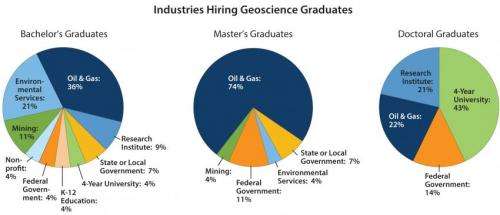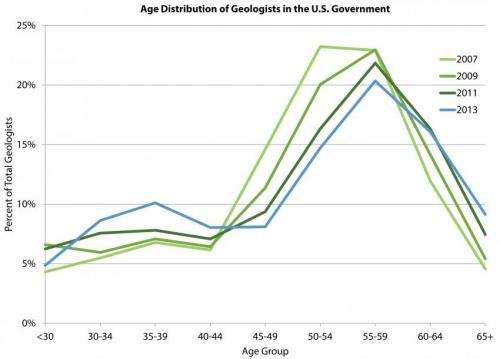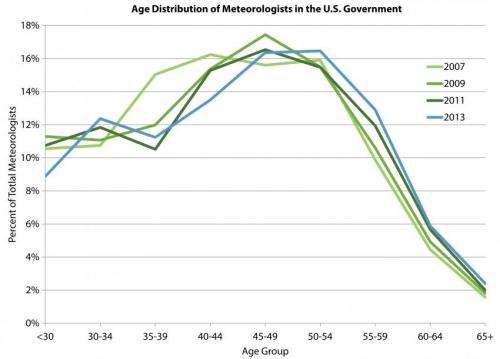New report details more geoscience job opportunities than students

In the American Geosciences Institute's newest Status of the Geoscience Workforce Report, released May 2014, jobs requiring training in the geosciences continue to be lucrative and in-demand. Even with increased enrollment and graduation from geoscience programs, the data still project a shortage of around 135,000 geoscientists needed in the workforce by the end of the decade.
"Industry has recognized, and is mitigating the upcoming shortage of skilled geoscientists in their employ, but the federal geoscience workforce is still demonstrably shrinking" report author Carolyn Wilson said, noting that the federal geoscience workforce decreased in all sectors except meteorology; this includes geoscientists skilled in the energy, mining/minerals and hydrology fields. Combined with continued unevenness is the workforce readiness of many geoscience graduates and a regionally hot job market, the geosciences are a dynamic component of the U.S. economy.
Employers have appreciably skilled geoscientists to choose from too. Numbers of graduating geoscience majors who started their degrees at a two-year colleges have increased, as have the number of students participating in a field camp experiences—an important facet of a geoscience degree, where students get experience interpreting the landforms critical to determining where energy or water resources exist, as well as interpreting locations susceptible to hazards like flooding or landslides. Most students graduating from a geoscience degree program have taken math courses up to a calculus-II level, but there is still concern from employers over whether these students are graduating with enough quantitative experience to be completely apt for a career in the geosciences.
Employers underscore the necessity of having enough skilled grads to meet vacancies that will exist in the geoscience sector in the upcoming decades.
"It's important that working knowledge is passed down because losing the institutional knowledge could have negative impacts for the overall productivity of these companies." Wilson said.

"Most importantly there is incredible potential for institutions to recruit from the diverse talent pools arising at two year institutions, and many career opportunities available to students enrolled in geoscience programs, and early-career geoscientists entering the workforce," Wilson said. "Plus, this is the first time we have seen a major shift in employment patterns in over a generation, with increasing number of bachelor recipients securing geoscience positions, and newly minted Master's finding themselves in high demand."

More information: The report is available for download from the following link: www.americangeosciences.org/wo … s/status-report-2014
Provided by American Geosciences Institute
















